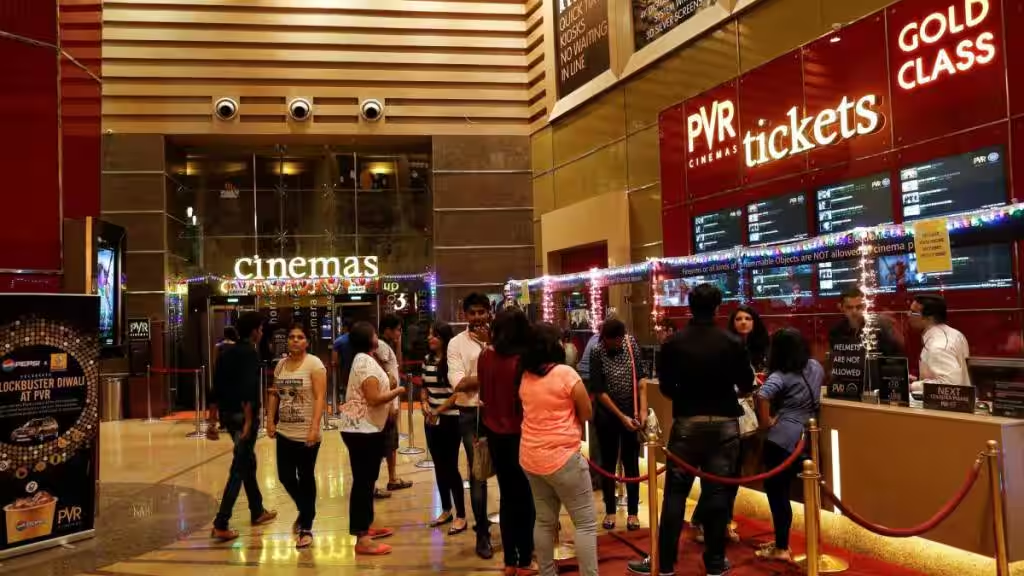PVR INOX Dispute Resolved, Malayalam Films to Return to Screens – Compensation Details in Negotiation
Malayalam Movies Gain Big Screen Access : The recent standoff between PVR INOX and the Malayalam film industry has officially ended. PVR Pictures Limited CEO Kamal Gianchandani confirmed on Saturday that the multiplex chain will resume screening Malayalam films from Vishu (April 14th). However, the resolution hinges on ongoing negotiations between PVR INOX and the Film Employees Federation of Kerala (FEFKA) regarding compensation for Malayalam film producers whose releases were disrupted by the blackout.
Background on the Conflict
The dispute originated with a disagreement over virtual print fees (VPF), levied by digital distribution networks to cover the costs associated with delivering films to theaters. In response to high VPF rates charged by established providers (QUBE and UFO), the Kerala Film Producers Association (KFPA) created its own digital distribution platform, Producers’ Digital Content (PDC). This move led to a conflict when the KFPA demanded the exclusive use of PDC, a condition PVR INOX ultimately refused. Consequently, PVR INOX removed Malayalam films from all of its screens nationwide.
FEFKA’s Strong Stance & Impact on Recent Releases
FEFKA representatives vehemently denounced PVR INOX’s actions during a press conference, arguing that the multiplex chain unfairly targeted the Malayalam film industry. FEFKA General Secretary Unnikrishnan B underscored the financial and reputational damage caused, vowing to withhold future Malayalam films until affected producers were fully compensated. The timing of this boycott proved particularly harmful, as the Malayalam film industry has seen a string of recent successes, including critically acclaimed titles like Aadujeevitham – The Goat Life and Varshangalkku Shesham. These and other films suffered a significant blow to their box-office performance due to their removal from PVR INOX screens.
Resolution and Future Outlook
The swift resolution of this matter signals a positive development for all parties. While PVR INOX has committed to restoring Malayalam films to their theaters, the specifics of the compensation package for affected producers remain under discussion. Filmgoers can anticipate both the release of highly anticipated new Malayalam titles and the rescheduled screenings of previously blocked films across PVR INOX properties.
Additional Considerations
- Industry Impact: It’s worth noting that this dispute might have broader consequences for the exhibition sector within India’s film industry. It could potentially encourage other regional film industries to explore similar self-distribution models, challenging the dominance of established digital distribution networks.
- Ongoing Negotiation: While the core issue appears resolved, the final outcome of the compensation negotiations will likely determine the long-term relationship between PVR INOX and the Malayalam film industry.
Here’s a breakdown of the potential impacts the PVR INOX and Malayalam film industry dispute and its resolution could have on Bollywood:
1. Limited Direct Impact:
- Geographical Difference: The conflict primarily involved a South Indian regional film industry, and its resolution might have minimal direct consequences for Bollywood, which operates primarily in the Hindi-speaking market of North India.
- Precedent-Setting: While unlikely to spark immediate change, the Malayalam industry’s organized response and swift resolution could embolden other regional film industries to push back against multiplex chains in future disputes. However, Bollywood typically enjoys a stronger position in such negotiations due to its larger market share.
2. Indirect Impacts and Broader Implications:
- Power of Regional Cinema: The incident highlights the growing strength and influence of regional film industries in India. Malayalam cinema, in particular, has gained a reputation for high-quality, critically acclaimed films, making it a more significant player in the national film market.
- Challenges for Multiplexes: The dispute underscores a potential vulnerability for major multiplex chains. While they hold significant power, their dependence on a steady supply of content across diverse languages gives regional film industries some leverage, particularly when acting in unison.
- Distribution Models: Should the KFPA’s self-distribution model prove successful, it might inspire similar initiatives in other regional film industries, including Bollywood. This could disrupt traditional distribution channels and potentially reduce the fees charged by dominant players.
3. Potential Positive Outcomes for Bollywood:
- Diverse Content: A more level playing field between regional and Bollywood cinema might result in a wider variety of films being screened in multiplexes nationwide, increasing choice for viewers.
- Collaboration: The Malayalam industry’s success could foster greater collaboration between Bollywood and regional film industries on creative projects and distribution strategies.
Overall:
While the direct impact on Bollywood might be minimal in the short term, this incident serves as a reminder of the evolving landscape of the Indian film industry. It highlights the:
- Growing significance of robust regional cinema.
- Potential for shifts in multiplex-distributor relations.
- Opportunities for collaboration and diversification as Bollywood continues to navigate an increasingly complex and dynamic market.

Rishabh Singh is the Editor-in-Chief and CEO of Latestnews24.com. He has also completed his graduation in BSC Aviation and has 2+ years of experience in blogging and digital marketing. Have worked with many businesses and blogs, He is also interested in Entertainments/movies/web stories and new foods recipes news, Actually this is his favorite subject. So he is always ready for discussion and written about this topic.
